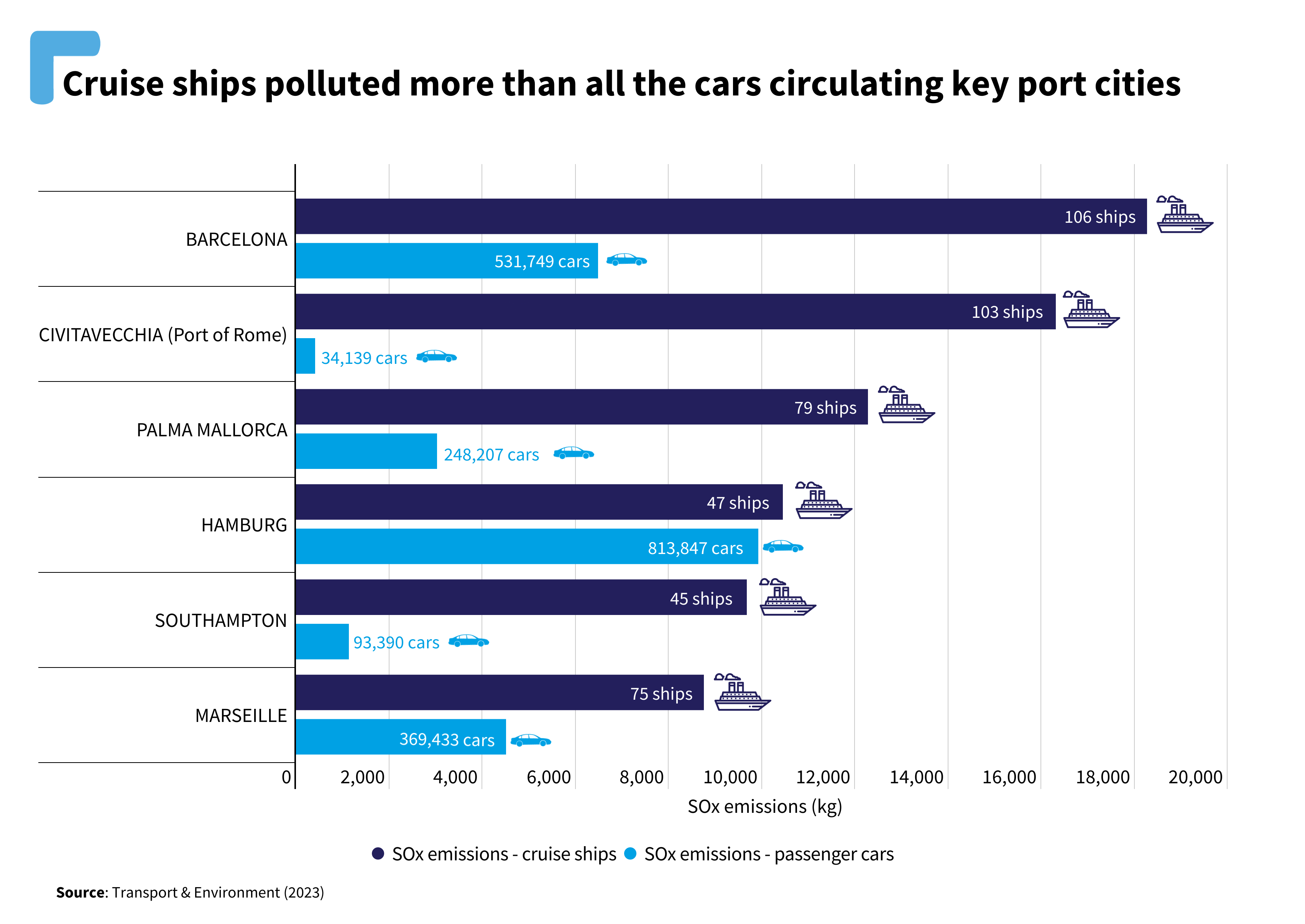Toxic air pollutants from cruise ships are back to pre-pandemic levels, leaving Europe’s port cities choking in air pollution, a new Transport & Environment study shows. Despite the introduction of the UN shipping body’s sulphur cap in 2020, last year Europe’s 218 cruise ships emitted as much sulphur oxides (SOx) as 1 billion cars.
In the UK, Southampton ranked as Europe’s seventh most-polluted port in terms of cruise ship air pollution with just 45 ships responsible for almost ten times more harmful pollutants than all of the city’s 93,000 cars.

The analysis also shines a light on the benefits of cities taking action to address cruise ship pollution. The port of Venice saw air pollutants from cruise ships fall 80% following the city’s ban on large cruise ships. In 2019, the city ranked as the most-polluted port city in Europe but fell to 41st place after implementing a ban on cruise ships in 2021. It shows that it is possible to tackle air pollution, says T&E, which calls for greater electrification at ports in order to save lives.
Jon Hood, UK Sustainable Shipping Manager at T&E UK, said: “While Southampton might not have the weather of Barcelona, Mallorca, or Marseille it certainly has the pollution. Our port cities in the UK are suffering significant impacts from the harmful air pollutants caused by shipping. With the government currently revising its flagship green shipping plan we have the perfect opportunity to finally get serious about addressing shipping pollution.
That means switching away from filthy fossil fuels and onto clean, zero emission fuels like green hydrogen, and setting binding targets for UK ports to support zero-emission technologies. This includes shore side electricity, which allows cruise ships to plug in at the port and to switch off their polluting engines.”
Barcelona was Europe’s most polluted port last year followed by Civitavecchia, a coastal port northwest of Rome and the Athenian port of Piraeus.
Analysis from T&E UK earlier this year showed that in 2021, UK shipping produced 22 million tonnes of greenhouse gas emissions from burning 7 million tonnes of dirty fossil fuels. 2 million tonnes of that pollution – around 10% – occurred in UK ports. Alongside greenhouse gases, burning marine fuels produces an array of harmful air pollutants including oxides of sulphur and nitrogen, which can cause or exacerbate asthma and other respiratory health problems.
The most polluting cruise ship operator was MSC Cruises – whose cruise ships emitted nearly as much SOx as all the passenger vehicles in Europe. Accounting for all of its subsidiaries, the Carnival group polluted the most.
Many cruise operators like MSC are investing in fossil gas (LNG) as a cleaner alternative. So far this year, more than 40% of cruise ships ordered were LNG-powered. These ships are better in terms of air pollution, but they are extremely damaging from a climate perspective due to methane leaks from their engines – a potent gas over 80 times more warming than CO2[1]. P&O’s MS Iona, for example, emitted as much methane as 10,500 cows over a year.
ENDS
Notes to editor
[1] Methane’s (CH4) global warming potential (GWP) is 82.5 times higher than CO2 over a period of 20 years and 29.8 times higher over a 100-year period.


